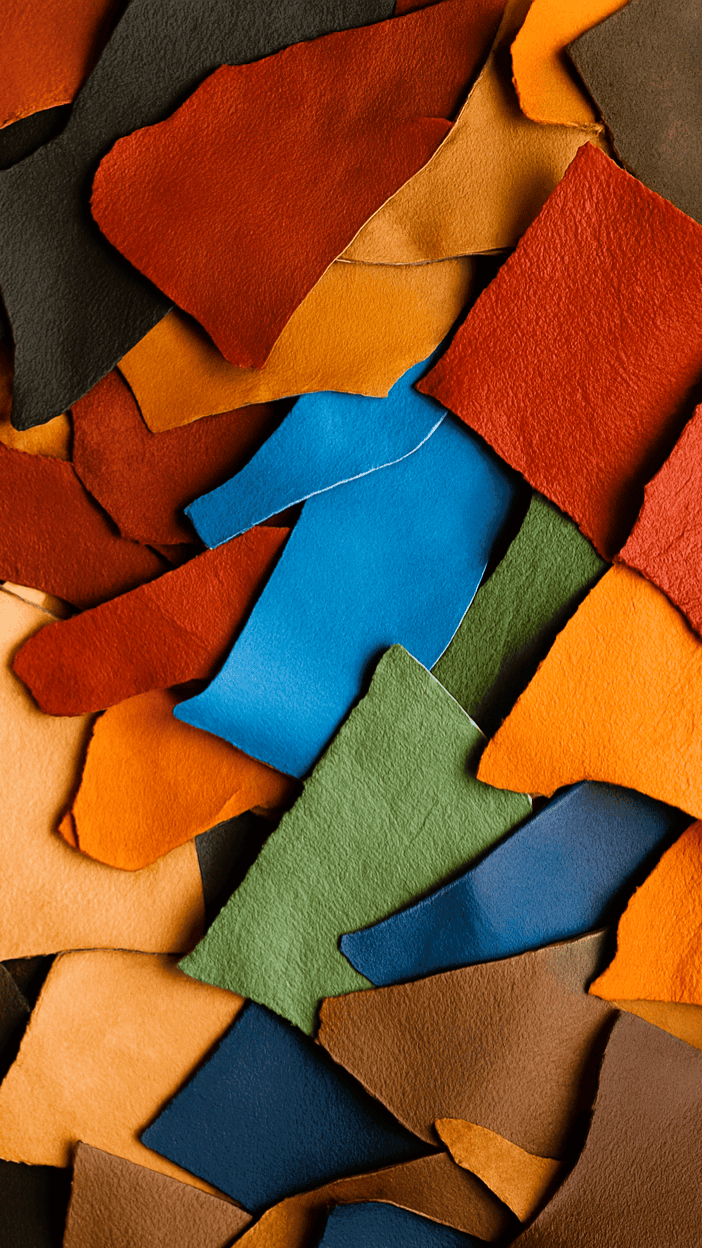Challenges of leather
Leather and its environmental impact
A natural material par excellence, leather has always embodied nobility, elegance, and durability. Present in both artisanal know-how and contemporary creations, it has transcended the ages without losing its modernity or symbolic power. But in times of climate change, it finds itself at the heart of the debate on ecological transition and industrial responsibility.
Made from agri-food waste (meat, milk), leather is not produced for its own sake. This virtuous cycle already represents a successful form of recycling and reuse of materials that would otherwise become waste, and is part of a logic of sobriety by limiting waste. However, its ecological footprint – emissions, water, waste – remains questionable. Managing its end of life appears to be a key point : how can we extend its potential, and how can we prevent it from prematurely joining the waste stream?
This is where Authentic Material comes in, giving leather a second life and placing its transformation in a more sober, circular and future-oriented economy.
Traditional end-of-life leather disposal methods
According to the FAO (Food and Agriculture Organization of the United Nations), the leather industry generates more than 800,000 tons of solid waste each year. During the manufacturing stage of leather goods and saddlery, industrial waste is generated and treated primarily through landfill or incineration:
- Energy recovery : when incinerated in suitable facilities, leather can produce heat that is converted into energy. However, its combustion also releases pollutants (NOx, SO2, VOCs), requiring modern smoke treatment systems.
- Landfill : due to chemical treatments (tanning, dyes, etc.), leather degrades very slowly and can release harmful substances into the soil and water tables.
A third, more confidential approach is upcycling, which involves the creative reuse of existing materials to give them a second life without transformation. While interesting, this practice remains limited due to the irregularity and small volume of deposits.
To go further, Authentic Material gives a second life to leather, on an industrial scale and with low environmental impact.

Recycling leather, a technological challenge
Leather is a rot-proof material , which is the very purpose of tanning ; it is resistant to decomposition. Based on this, other factors complicate the recycling of leather, due to the variety of processes used and its specific characteristics.
- Skins, a by-product of the food industry, come from multiple animal species .
- Tanning methods vary (chrome, vegetable, synthetic), with each tannery having developed its own know-how.
- The finishes (colors, textures) further accentuate this heterogeneity.
In addition to these chemical constraints, there are also mechanical challenges. Grinding a soft material like leather produces a heterogeneous mixture that is often complex to process.
This is precisely where Authentic Material’s expertise comes in : the company is able to process all types of leather deposits and transform them on an industrial scale, thus giving this material a new life and sustainably extending its use cycle.



